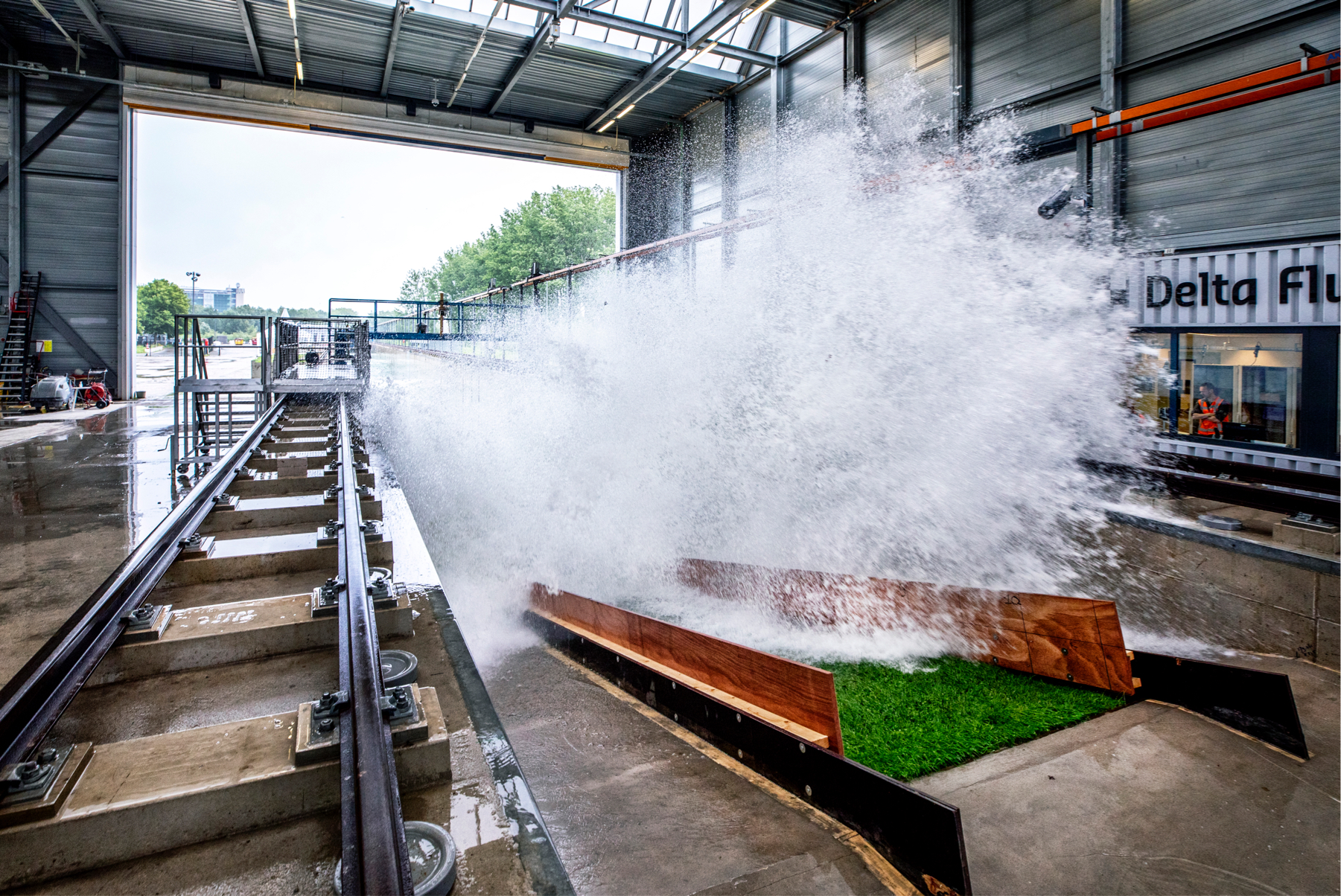Effective flood protection
The Netherlands has a long history of protecting the country from flooding. Deltares develops and implements knowledge, innovative techniques and solutions to improve the flood defences and the assessment of those defences, to enable sustainable construction and allow for integrated spatial implementation. The return on investment for these developments is large, since they allow Dutch authorities to manage the 3600 km of flood defences in the Netherlands cost-effectively. The developments are used to meet societal challenges such as the lack of physical space, excess nitrogen emissions and nature conservation.
Supporting the Dutch Flood Protection Programme by understanding the failure mechanisms of flood defences
In the Netherlands, the Flood Defence Act of 2017 requires all levees to comply with the statutory safety standards by 2050. The Dutch government is responsible for providing a framework (the Assessment and Design Toolbox, BOI) to perform this safety assessment. The Dutch Flood Protection Programme (HWBP, HoogWaterBeschermingsProgramma) is responsible for the design and implementation of upgrade projects to comply with the statutory safety standards.
We work closely with the Dutch government agencies in the Flood Protection Programme (HWBP) at three levels: as a strategic partner, as an advisor and on the execution of projects. At the strategic level we help define the national knowledge agenda on failure mechanisms and Flood-Resilient Landscapes. As an advisor, Deltares develops tools such as the BOI to assess the levels of protection afforded by dikes, dunes, dams and structures like storm surge barriers, and to design new flood defences. With the BOI, the Dutch government and waterboards can prioritise investment decisions more efficiently. We help water authorities with the “The Innovation Accelerator’’. That work involves supporting the national levee reinforcement programmes with the selection of innovations in a cycle of national and international knowledge development and implementation.
'The Netherlands is facing the largest flood protection operation since the Delta Works. Innovations like this make the difference in terms of implementing our dike upgrade agenda in the Netherlands.'
Erik Wagener, general director of the Flood Protection Programme
Our tools draw on fundamental knowledge of the failure mechanisms of flood defences, and physical drivers such as hydraulic loading. Typical initial failure mechanisms are piping, geotechnical instability, failure of protection layers (grass, placed block revetments, asphalt, rock armour, clay), dune erosion and the non-closure of storm surge barriers. These initial failure mechanisms and subsequent follow-up mechanisms may lead to severe flooding. We aim to develop tools that quantify the probability of these failure pathways. In a range of projects, we develop and validate physical and empirical knowledge, and implement it in our tooling such as software and manuals. Two examples of research projects in 2023 are given below.

Field experiments on piping in tidal sands
A process known as ‘piping’ can begin when water levels are high: pipes or tunnels are formed below a dike. Models used to assess the probability of failure due to piping have not been validated for tidal sand or for actual field situations. In the Hedwige-Prosperpolder Living Lab, two unique full-scale experiments were executed to study piping in what was originally a tidal-sand aquifer. Working with several national partners (Fugro, waterboard Hollandse Delta, HWBP), the hypothesis was tested that this type of sand is much more resistant to piping than the model predicts. The project showed that, on average, tidal sand is more than twice as resistant as modelled and that, in practice, it is safe to assume 40% more resistance. This will save over 150 million euros in reinforcement costs in the Netherlands. The impact of the study, however, extends well beyond the Dutch border since piping plays a role in several other deltas as well.
Clay erosion testing in the Delta Flume
Many primary flood defences in the Netherlands consist of a top layer of grass with clay below. To quantify the failure probability for these dikes under wave loading, it is essential to understand the behaviour of the underlying clay layer after initial damage to the top layer. Working with our partners, HWBP and four Dutch water authorities, we conducted a large-scale experimental programme in the Delta Flume. The results of these tests were combined with a range of detailed numerical calculations, resulting in a better understanding and validation of clay layers under wave attack. The results were applied directly to a specific dike reinforcement project in the Netherlands and they will further improve our array of tools for use in future projects.

All Sendai priority’s











